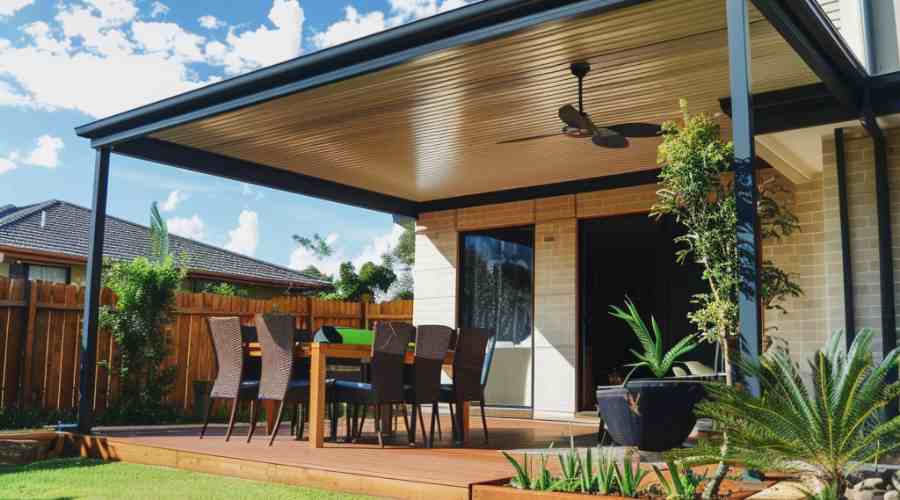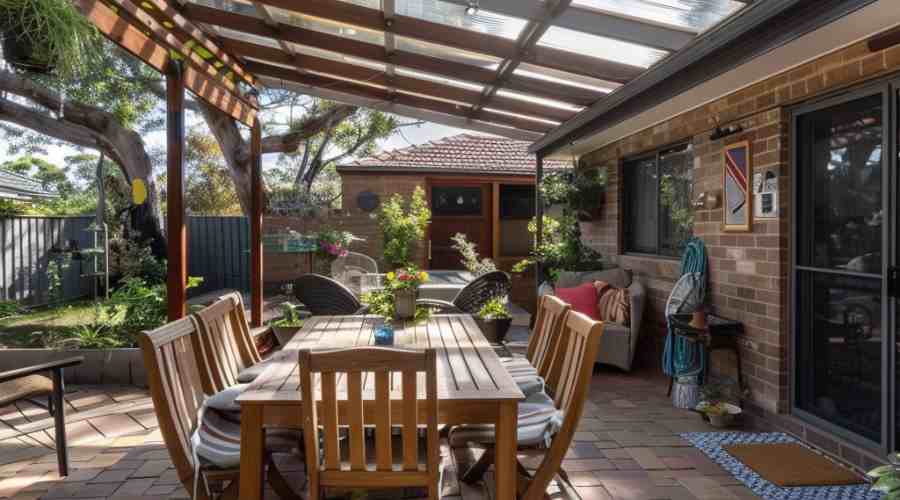The Patio Building Materials Guide
Pros and Cons Of Common Patio Materials
Australia’s climate makes patios a popular addition to backyards for outdoor living spaces. Choosing the right materials is key to durability and enjoyment. This article explores popular choice for patio building materials, weighs the pros and cons of each, and provides factors to guide your decision.
Benefits of Choosing the Right Patio Materials
Constructing a patio brings many lifestyle benefits. It creates an outdoor hangout to host barbeques, relax on comfy patio furniture, and connect with nature. Using materials suited to weather and foot traffic ensures safety, functionality and timeless appeal for years to come. Key benefits include:
- Extends livable space of your home
- Provides fresh air entertainment area
- Boosts time spent outdoors
- Host gatherings with family and friends
- Adds value by increasing useable square footage
- Defines a multipurpose space for play, dining, lounging when weather permits
Popular Options For Patio Materials
With many material options for patios, weigh the pros and cons below to find your best fit.
Natural Stone
Stone that is cut directly from quarries or mines. Types are sandstone, travertine, bluestone, limestone and granite. Natural stone has beautiful and unique patterns from nature. There are many stone varieties to choose from. Stones like bluestone are more durable than sandstone or limestone over decades.
Pros
- Beautiful natural patterns and textures
- Cool underfoot
- Ages well over decades
- Variety of natural stone types
Cons
- Expensive upfront cost
- Requires expert installation
- Absorbs moisture if not sealed
- Needs resealing every 1-2 years
Concrete
This is a mixture of cement, sand, gravel and water. The materials blend together into a thick liquid that hardens into a solid. Concrete patio cures over time into a long lasting, durable surface. Many homes use it for driveways, basement flooring and patios.
Pros
- Affordable option
- Durable for high traffic
- Minimal upkeep
- Customizable finishes
Cons
- Prone to cracks over time
- Not slip-resistant unless treated
- Can be cold under bare feet
- Requires proper drainage
Pavers
These are pieces like brick patio, concrete pavers, stone and tile. They connect together to form the patio surface. They create designs, patterns and textures as part of the landscape. Pavers stand up well to outdoor use but still require some care.
Pros
- Range of style options
- Permeable to allow drainage
- Can be installed DIY
- Bricks self-align
Cons
- Weeds grow in cracks
- Settling soil dislodges
- Freeze/thaw cycles cause shifting
- Higher long term maintenance / regular upkeep
Porcelain Tile
Porcelain tile starts as a form of clay that gets molded and fired at extremely high temperatures. This makes tile super durable, dense and water-resistant. Porcelain lasts for decades outdoors. It resists fading and stands up to heavy use in any elements.
Pros
- Mimics look of natural stone
- Extremely durable material
- Fade, frost and fire resistant
- Easy to clean
Cons
- Cold underfoot
- Professional installation required
- Grout needs resealing
Gravel
Gravel consists of small loose rocks, like pebbles or crushed stone. Typical gravel types used outdoors are decomposed granite and pea gravel. A gravel patio has excellent drainage thanks to air pockets between the rocks. But weed barrier fabric is needed underneath to block weeds.
Pros
- Inexpensive option
- Easy DIY installation
- Good drainage
- Natural look
Cons
- Weeds easily
- Difficult barefoot
- Needs edging
- Tough wheelchair access
Rubber Tile
Rubber tile is made from recycled tire rubber or flexible plastic bonded together. These interlocking tiles allow easy DIY installation. Rubber withstands weather and bounces back from heavy activity.
Pros
- Kid and pet friendly
- Easy on feet and joints
- Simple click lock installation
- Range of color options
Cons
- Retains heat
- Not as visually appealing
- Less drainage
Wood
Wood uses dense tropical species like ipe and mahogany that better resist rotting. It appears both modern and natural. It requires upkeep to maintain its beauty outdoors over many years.
Pros
- Beautiful natural grain
- Warm feel underfoot
- Stain or let weather
Cons
- Slippery when wet
- Splintering over time
- Mold susceptible
- Needs oiling
Composite Decking
Composite deck combines recycled plastic, wood fibers or bamboo fibers held together by a binding agent. Another type uses PVC and polyethylene plastic. It creates wood-looking planks minus all the maintenance of real timber. The mix of ingredients varies by brand. Most composite materials resist moisture, stains, bugs and mold.
Pros
- Affordable option
- Low maintenance
- Stain and mold resistant
- Custom colors and textures
Cons
- Can still fade over time
- No bare foot grip
- Gets hot in direct sun
Factors to Consider When Choosing Patio Materials
Picking the right materials ensures your patio functions beautifully and safely for decades. Consider:
Climate
Australia’s climate varies from tropical up north to more temperate down south. Consider your area’s temperature range, humidity, rainfall and wind patterns. Select materials that can withstand weather exposures from summer heat waves to winter cold snaps. Durability tied to climate prevents future cracking, fading and wear issues.
Usage
Decide your intended use – dining patio for family meals, play zone for kids’ toys or relaxed garden lounge with comfy chairs. A play area needs soft, forgiving surfaces, while dining zones should resist stains. Analyze foot traffic flows when planning the layout. Zone higher durability materials in walkways or high use areas accordingly.
Safety
Flat, smooth surfaces prevent tripping hazards but often slick with rainfall or drink spills. Prioritize slip-resistant finishes, plus grip enhancing additives in products like concrete. Rubber patio tiles offer safe soft landings for kids at play. Proper drainage and slope management thwart standing puddles after wet weather.
Maintenance
All patio materials need some degree of care, like occasional pressure washing or resealing. Compare future maintenance needs like weeding, debris removal or re-oiling wood. Realistic time investments now prevents problems like erosion, cracks or splintering. Plan do-it-yourself repairs versus pro help to budget the effort.
Appearance
Materials impact aesthetics with variations in colour, shape, pattern, texture and finish. Blend patio visuals with the existing landscape whether native plants or minimalist Zen rock garden. Extend indoor architecture outside with wrought iron, lighting, plant choices and material finishes.
Budget
Patio costs range vastly by material and size from DIY gravel to high-end stone masonry. Set realistic budgets before exploring options. Factor long-term durability, regular maintenance effort and use in price comparisons. Invest more on high traffic spaces. Get creative mixing poured concrete borders with lower cost paver interiors to save.
Conclusion
With a wide variety of affordable patio materials available in Australia, assess your climate, usage, safety priorities, maintenance tolerance, architectural style preferences and labour costs to make the optimal choice. Striking the right balance between practical factors and design will create an enjoyable, durable outdoor space lifting your quality of life at home for many years to come.



